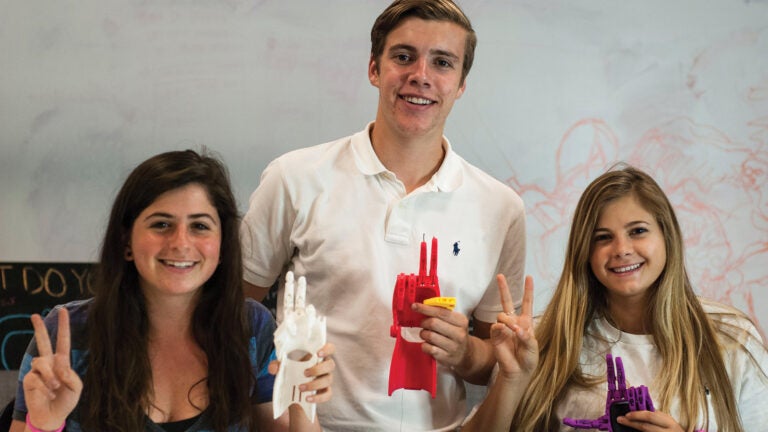
Photo courtesy of the USC Freehand Project
USC Students Create Prosthetics with 3-D Printers
Too many children across the world bear the marks of violence and war: missing hands and feet. Determined to help these children, a group of USC students turned to technology.
Their life-changing work all started with two inspirational young women.
Kara Tanaka, an accomplished sculptor and student in the postbaccalaureate premedical program at the USC Dornsife College of Letters, Arts and Sciences, linked with a network of volunteers called e-Nable. These volunteers create 3-D-printed hands for children on demand. Following e-Nable’s model, Tanaka started the USC Freehand Project to supply these hands to children in Haiti.
But the human hand is a wickedly complicated sequence of bones and joints. Tanaka realized she didn’t just need to make a hand— she needed to engineer one.
At the same time, Alison Glazer, a USC Viterbi School of Engineering mechanical engineering senior, was looking for projects that matter. Glazer is president of student-run club 3-D For Everyone, or 3D4E, which unites students interested in 3-D printing.
“We were printing cool toys, key chains and iPad holders, but we wanted to do more than what the average kindergartner could,” Glazer says.
Glazer and 3D4E had the know-how, equipment and manpower that Tanaka needed—more than 30 USC Viterbi engineering students.
Together, the students printed about a dozen prosthetic hands for kids in Haiti and were ready for more. Their e-Nable partners gave them a new challenge: Create hands for war-torn Syria. The work so galvanized and inspired the leaders of 3D4E that they made the Freehand Project a permanent feature of their club.
The work has always been about breaking the stigma of wearing prosthetics, Tanaka says. “Children who need a hand, no matter where they’re from, now have access to a functional, original and low-cost prosthetic customized to suit them perfectly.”
Adds Glazer, noting the popularity of the hands among children: “We’re giving them something that actually makes other kids jealous.”
